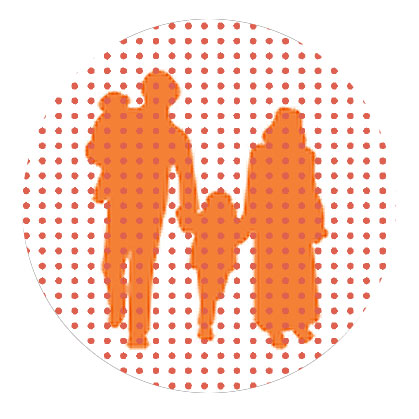Nightmares

Filling one’s mind with calming, positive thoughts in the daytime is essential to sleeping peacefully at night

W
hile nightmares occur most commonly in kids aged three to ten–10, even some adults have regular nightmares. When nightmares are frequent, cause distress, disrupt sleep, lead to insomnia, or cause daytime difficulties in functioning, they’re classified as a nightmare disorder. Regardless of the classification, though, it’s important to know what to do to provide relief and resolution.
“When my son wakes up screaming, we run into his room, but he’s either frozen in terror or kicking and flailing. He doesn’t even seem to know we’re there, and there’s nothing we can do to calm him down. Eventually he falls back asleep, and in the morning he doesn’t even remember that it happened!”
This parent is describing a “night terror” — a phenomenon that affects only two percent of adults but is common in children. In most cases, night terrors disappear as the child matures.
Like night terrors, nightmares also cause sleep interruption and panic attacks. The main difference between a nightmare and a night terror is that the former is usually a conscious experience, remembered both at the time one wakes up from it and also the following morning. Common themes of nightmares are being threatened, chased, humiliated, exposed or shamed, or facing a disastrous loss or failure — any scenario that poses an actual or existential threat to survival or well-being.
Although stress and trauma are the main culprits, nightmares can be caused by food sensitivities, substance abuse, medicines, depression and other mental health disorders, exposure to terrifying images and information, sleep deprivation, and by internal biological or disease processes. As mental processes are the most common cause of nightmares, let’s take a closer look at appropriate first-line interventions.
The Daytime Brain
What we do, see, and hear during our waking hours gets woven into our dream life. The characters, places, activities, and feelings of our life are an accurate reflection of our lived experience. Asking, “What is the main feeling in my dream and what does that remind me of in my current life?” can yield insight and practical implications for moving forward in real life. The same is true for nightmares.
“In my dream, I was running and running. Some bad people were chasing me, and they had just about caught up with me when I suddenly woke up with a pounding heart.”
What was the main feeling? What does that remind you of in your current life?
“I felt terrified, trapped, overwhelmed. I feel like that every day, rushing about trying to get things done before the kids come home at four.”
The dreamer in this case is feeling stressed, but hasn’t made time to examine her feelings. So her brain tries to get her attention at night, hoping she’ll get the message. Unfortunately, many people ignore the messages their dreams try to convey.
Echoes of the Past
Sometimes, however, the feeling doesn’t remind a person of anything that’s going on now. In that case, simply ask, “Does this feeling remind you of something that happened in your past?”
Nightmares stemming from PTSD (post-traumatic stress disorder) may stem from dissociated memory fragments. The original trauma story may or may not be recalled, but feelings and behaviors caused by the events are still active. Acknowledging the panic and horror may be enough to stop these feelings from surfacing at night: “Hello in there! I know you’re terrified. I’m here with you now.”
Remember, you can always calm inner parts of the personality by communing with them. You can help them even more by imagining a different — healthier, happier — ending to the nightmare. For example, suppose you have a nightmare in which a violent person is chasing you. Picture yourself stopping running, turning around slowly, facing the person, and using a magical weapon to put him to sleep right in front of your feet. Once he’s asleep, you turn around and walk safely home. Engaging in this “waking dream” helps to heal your subconscious mind and can result in fewer nightmares. In addition to self-help techniques, therapy can heal the symptoms of PTSD, including recurring nightmares.
Another essential treatment for nightmares is to nurture your nervous system during the daytime hours. Engaging in creative activities daily changes the way the brain processes stress. These mindful activities generate positive chemical and neurological effects that settle the nervous system and promote a sense of internal safety and stability.
(Originally featured in Family First, Issue 870)
Oops! We could not locate your form.




